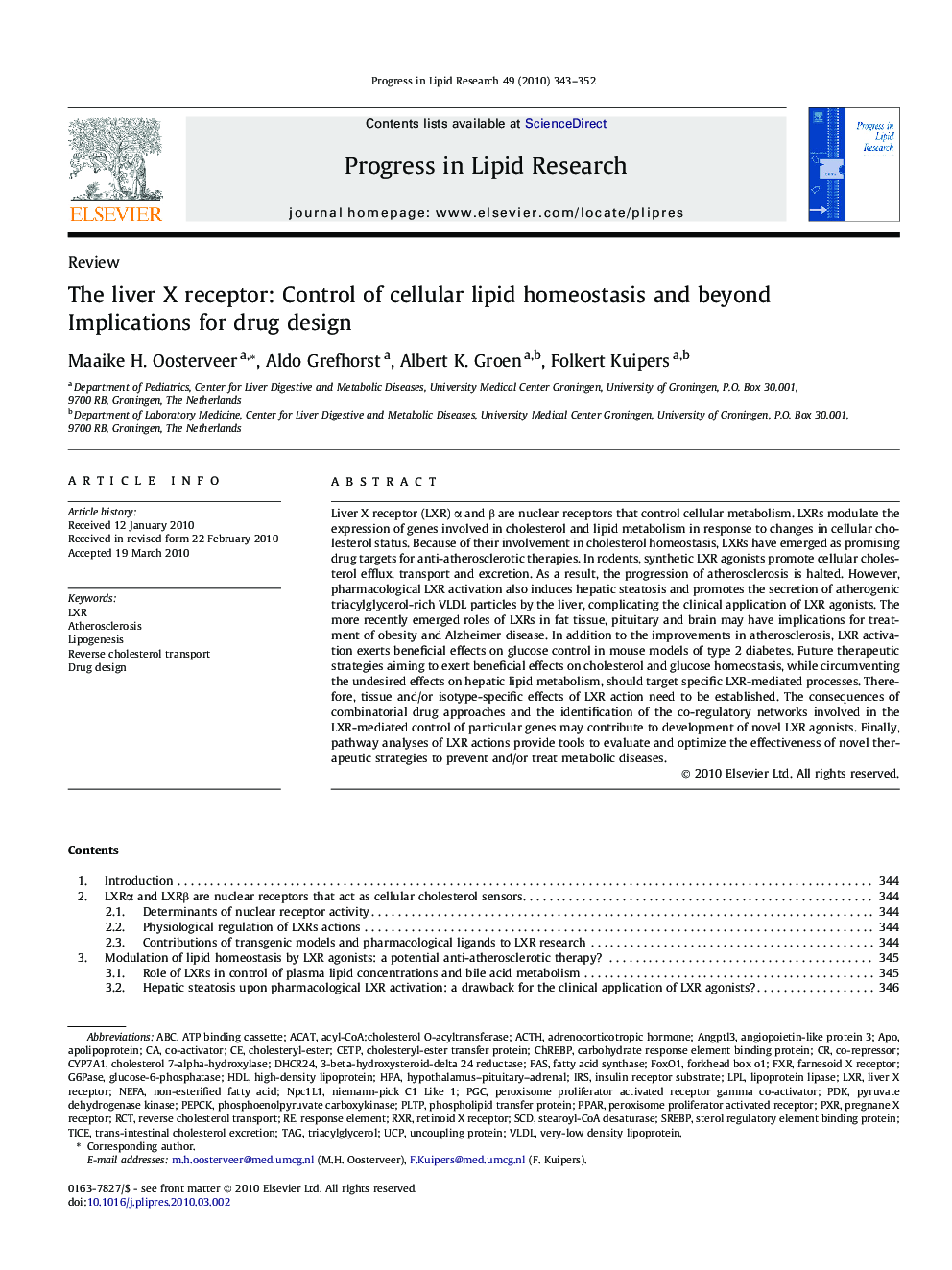| Article ID | Journal | Published Year | Pages | File Type |
|---|---|---|---|---|
| 2019211 | Progress in Lipid Research | 2010 | 10 Pages |
Liver X receptor (LXR) α and β are nuclear receptors that control cellular metabolism. LXRs modulate the expression of genes involved in cholesterol and lipid metabolism in response to changes in cellular cholesterol status. Because of their involvement in cholesterol homeostasis, LXRs have emerged as promising drug targets for anti-atherosclerotic therapies. In rodents, synthetic LXR agonists promote cellular cholesterol efflux, transport and excretion. As a result, the progression of atherosclerosis is halted. However, pharmacological LXR activation also induces hepatic steatosis and promotes the secretion of atherogenic triacylglycerol-rich VLDL particles by the liver, complicating the clinical application of LXR agonists. The more recently emerged roles of LXRs in fat tissue, pituitary and brain may have implications for treatment of obesity and Alzheimer disease. In addition to the improvements in atherosclerosis, LXR activation exerts beneficial effects on glucose control in mouse models of type 2 diabetes. Future therapeutic strategies aiming to exert beneficial effects on cholesterol and glucose homeostasis, while circumventing the undesired effects on hepatic lipid metabolism, should target specific LXR-mediated processes. Therefore, tissue and/or isotype-specific effects of LXR action need to be established. The consequences of combinatorial drug approaches and the identification of the co-regulatory networks involved in the LXR-mediated control of particular genes may contribute to development of novel LXR agonists. Finally, pathway analyses of LXR actions provide tools to evaluate and optimize the effectiveness of novel therapeutic strategies to prevent and/or treat metabolic diseases.
